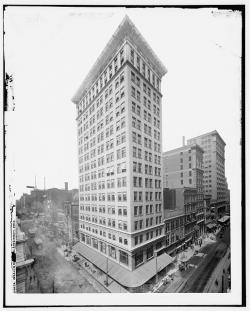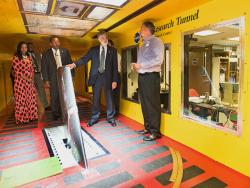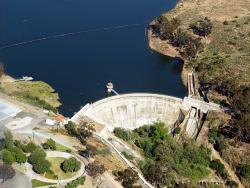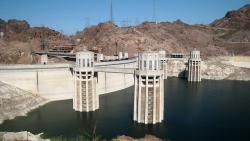USA



The 16-story Ingalls Building, still in use today, was the world's first reinforced concrete skyscraper. Its success led to the acceptance of high-rise concrete construction in the United States.
Melville E. Ingalls, for whom the building is named, spent two years convincing city officials to issue a building permit. Skepticism was high, because the existing height record for a concrete building was only six stories.

In operation since 1944, the Icing Research Tunnel is the oldest and largest refrigerated icing wind tunnel in the world. Technology developed there enables aircraft to fly safely through icing clouds. Two firsts include the unique heat exchanger and the spray system that simulates a natural icing cloud of tiny droplets.

When completed in 1888 to a height of 90 feet, Sweetwater Dam was once the tallest masonry arch dam in the United States, and it led to many others of the same basic design. The original construction began in November 1886 under the direction of Frank E. Brown (civil engineer for Bear Valley Dam) with the rubble-masonry thin-arch design being 50 feet in height. Subsequently, the owner of the water system called upon civil engineer James D. Schuyler to continue and complete the project. Although the field of hydrology was very new and not fully understood at the time, Mr.

Prior to 1909 the traditional fishtail bit scraped the rock and quickly dulled in service. The Hughes two-cone bit's revolutionary rolling action crushed hard-rock formations with twin cone-shaped, hardened steel bits, each with 166 cutting edges, revolving on bronze bearings shaped to provide a large surface with reduced friction.

Better known as the "Spruce Goose," the Howard Hughes Flying Boat was designed and built by Hughes Aircraft Co., to be the largest wood-constructed and the largest wingspan airplane ever built. As Hughes perfected his craft, he added significantly to what is known in areas of large-lift capability and power-boost systems. Originally designated the HK-1 in 1942, it was designed to meet wartime troop and material transportation needs (flying just high enough to evade submarine attacks).

The 50-mile Houston Ship Channel is a manmade port for ocean-going vessels, stretching from the Gulf of Mexico to Houston and Harris County, Texas.

The terminal, designed by noted architect Joseph Finger and built by the Works Progress Administration, is a rare remaining example of classic art deco airport architecture, featuring the distinctive design elements of that age: step forms, sweeping curves, and intricate geometrical patterns and motifs. Opened on September 28, 1940, the terminal was Houston’s gateway to the world, and served the fleets of Braniff Airlines and Eastern Air Lines.

In 1918, the U.S. Reclamation Service's director and chief engineer Arthur P. Davis proposed a dam of unprecedented height to control the devastating floods on the Colorado River, generate hydroelectric power, and store the river's ample waters for irrigation and other uses.


